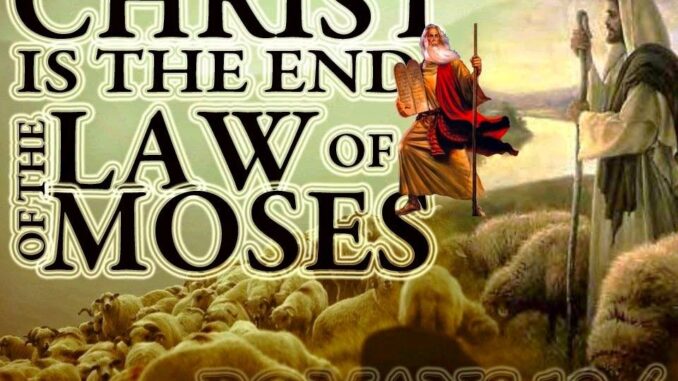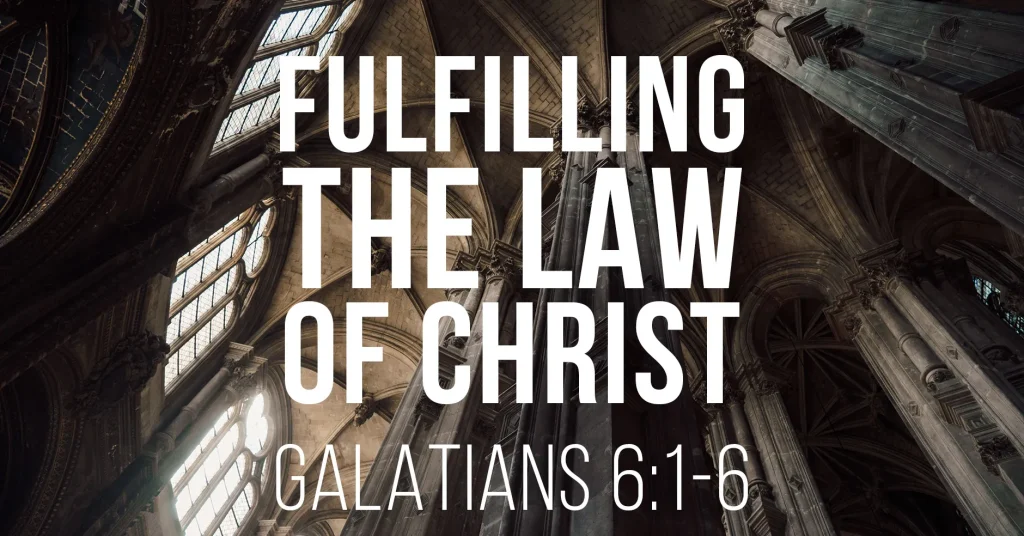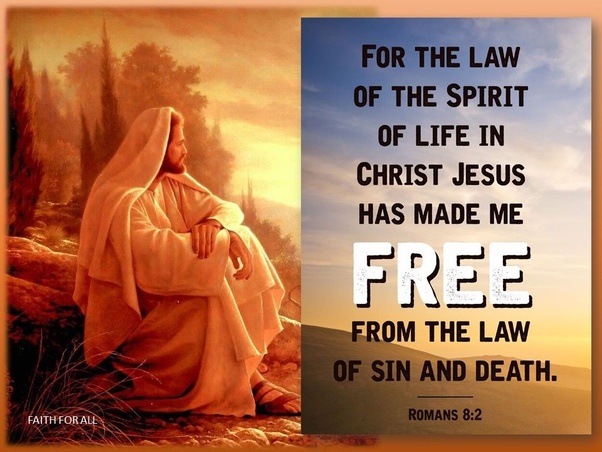
The Law of Moses

The “Law of Moses,” also known as the Mosaic Law, is a set of laws and commandments given by God to the Israelites through Moses. These laws are found in the first five books of the Bible, also known as the Torah or the Pentateuch. Here are the main points:
- Ten Commandments: The most famous part of the Law of Moses is the Ten Commandments. These are basic rules about how to worship God and how to treat other people. Examples include not worshipping other gods, honouring your parents, and not stealing or lying (Exodus 20:1-17).
- Religious Laws: These include instructions on how to worship God, such as offering sacrifices, observing holy days, and maintaining the Tabernacle (later the Temple). They explain how the Israelites should practice their faith.
- Moral and Ethical Laws: These laws provide guidelines for living a righteous life. They cover topics like justice, honesty, and caring for the poor and the stranger. For example, Leviticus 19:18 (NASB) says, “You shall love your neighbour as yourself.”
- Civil Laws: These laws govern everyday life and interactions among people. They include rules about property, marriage, and crime. For instance, Exodus 21:12-14 provides laws about dealing with personal injuries and other disputes.
- Dietary Laws: The Law of Moses includes specific instructions about what foods are clean (okay to eat) and unclean (not okay to eat). These are found in Leviticus 11 and Deuteronomy 14.
- Health and Purity Laws: These laws address cleanliness, disease prevention, and purification rituals. For example, Leviticus 13-14 gives detailed instructions on how to handle skin diseases.
- Blessings and Curses: The Law of Moses also includes promises of blessings for obeying the laws and warnings of curses for disobedience. Deuteronomy 28 outlines these blessings and curses.
The Law of Moses was given to the Israelites to guide them in their relationship with God and with each other. It was central to their identity as God’s chosen people. While Christians believe that Jesus fulfilled the Law of Moses, understanding these laws helps to appreciate the context and significance of Jesus’ teachings.
The Law of Christ

The “Law of Christ” is a term used in the New Testament to refer to the ethical teachings and commandments given by Jesus Christ. It emphasises love, compassion, and humility, guiding Christians in their behaviour and relationships with others.
The concept is primarily derived from Jesus’ teachings and is encapsulated in His command to love God and love one’s neighbour. Here are key points to understand about the Law of Christ:
- Love God and Love Your Neighbour: Jesus summarised the Law and the Prophets with two great commandments: loving God with all your heart, soul, and mind, and loving your neighbour as yourself. This is seen in Matthew 22:37-40 (NASB): “And He said to him, ‘You shall love the Lord your God with all your heart, and with all your soul, and with all your mind.’ This is the great and foremost commandment. The second is like it, ‘You shall love your neighbour as yourself.’ On these two commandments depend the whole Law and the Prophets.”
- Bearing One Another’s Burdens: Paul explains the Law of Christ in terms of mutual support and love within the Christian community. In Galatians 6:2 (NASB), Paul writes, “Bear one another’s burdens, and thereby fulfil the law of Christ.” This suggests that helping and caring for others is a fundamental aspect of this law.
- A New Commandment: Jesus gave His disciples a new commandment, which focusses on loving one another as He loved them. In John 13:34 (NASB), Jesus says, “A new commandment I give to you, that you love one another, even as I have loved you, that you also love one another.”
- Freedom and Responsibility: While Christians are free from the Old Testament ceremonial laws, they are called to live under the Law of Christ, which emphasises ethical and moral living based on love. Paul discusses this in 1 Corinthians 9:21 (NASB), “To those who are without law, as without law, though not being without the law of God but under the law of Christ, so that I might win those who are without law.”
The Law of Christ shifts the focus from a detailed list of do’s and don’ts to a principle-centered life motivated by love and guided by the example of Jesus. This law is about internal transformation and the outward expression of faith through love and service to others.
Differences in Application
Old Covenant Law of Moses
- Specific to Israel:
- Application: The Law of Moses was given specifically to the Israelites to govern their religious, moral, and civil life. It included detailed rules about worship, sacrifices, diet, and community living (Exodus, Leviticus, Numbers, Deuteronomy).
- External Observance:
- Application: Emphasised external rituals and compliance with a complex system of laws, such as circumcision, dietary restrictions, and various offerings and sacrifices (Leviticus 1-7).
- Temporary Sacrificial System:
- Application: Required regular animal sacrifices to atone for sins. These sacrifices were a temporary measure pointing to a future, perfect sacrifice (Leviticus 4-7).
- Conditional Relationship:
- Application: The relationship with God was conditional, based on Israel’s obedience to the law. Blessings were promised for obedience, and curses for disobedience (Deuteronomy 28).
- Covenant of Sin and Death:
- Nature: The Mosaic Law highlighted human sinfulness and the consequences of sin, which is death. It showed the need for atonement and the seriousness of sin (Romans 7:5-6, 2 Corinthians 3:7).
New Covenant Law of Christ
- For All Believers:
- Application: The New Covenant is made with the House of Israel and extends to all who believe in the Gospel, both Jews and Gentiles (Jeremiah 31:31-34, Hebrews 8:8-12).
- Internal Transformation:
- Application: Emphasises internal change and the spirit of the law. It focusses on love, faith, and transformation of the heart rather than mere external compliance (Romans 2:29, Galatians 5:22-23).
- Ultimate Sacrifice:
- Application: Jesus’ sacrifice on the cross replaced the need for animal sacrifices. He is the final and perfect sacrifice for sin, fulfilling the sacrificial system’s purpose (Hebrews 10:10-12).
- Unconditional Grace:
- Application: The New Covenant is based on grace and faith in Jesus Christ. Righteousness is given through faith, not by works of the law (Ephesians 2:8-9, Romans 3:21-22).
- Covenant of Grace and Life:
- Nature: The New Covenant offers forgiveness, eternal life, and a relationship with God based on grace, not on law-keeping. It brings life through the Spirit and frees believers from the penalty of sin and death (Romans 8:1-2, 2 Corinthians 3:6).
Why Christ Made the Law of Moses Obsolete
- Fulfilment of the Law:
- Jesus fulfilled the Law of Moses by perfectly obeying it and completing its purposes. Matthew 5:17 (NASB) states, “Do not think that I came to abolish the Law or the Prophets; I did not come to abolish but to fulfil.”
- New Covenant:
- Jesus established a New Covenant, which was prophesied in the Old Testament. This New Covenant provides a direct relationship with God through the Holy Spirit. Hebrews 8:13 (NASB) states, “When He said, ‘A new covenant,’ He has made the first obsolete. But whatever is becoming obsolete and growing old is ready to disappear.”
- Righteousness by Faith:
- Under the New Covenant, righteousness comes through faith in Jesus, not by adherence to the law. Galatians 2:16 (NASB) says, “A man is not justified by the works of the Law but through faith in Christ Jesus.”
- Universal Application:
- The Law of Christ applies to all people, fulfilling God’s promise to bless all nations through Abraham’s seed, which is Christ (Genesis 12:3, Galatians 3:16).
Shadows and Types in the Mosaic Law
- Shadows and Types:
- The Law of Moses contained many elements that were shadows and types of things to come. These were temporary and pointed forward to the ultimate fulfilment in Christ.
- The Seed:
- Galatians 3:19 (NASB) explains that the law “was added because of transgressions, having been ordained through angels by the agency of a mediator, until the seed would come to whom the promise had been made.” This seed is Jesus Christ.
- Fulfilment in Christ:
- Colossians 2:16-17 (NASB) states, “Therefore no one is to act as your judge in regard to food or drink or in respect to a festival or a new moon or a Sabbath day—things which are a mere shadow of what is to come; but the substance belongs to Christ.” Jesus is the reality and fulfilment of these shadows and types.
Covenant of Sin and Death vs. Covenant of Grace and Life
- Covenant of Sin and Death:
- The Mosaic Law highlighted human sinfulness and the consequences of sin, which is death. It revealed the need for atonement and underscored the serious nature of sin. Romans 7:5-6 (NASB) says, “For while we were in the flesh, the sinful passions, which were aroused by the Law, were at work in the members of our body to bear fruit for death.” 2 Corinthians 3:7 (NASB) refers to it as “the ministry of death, in letters engraved on stones.”
- Covenant of Grace and Life:
- The New Covenant offers forgiveness, eternal life, and a relationship with God based on grace. It brings life through the Spirit and frees believers from the penalty of sin and death. Romans 8:1-2 (NASB) says, “Therefore there is now no condemnation for those who are in Christ Jesus. For the law of the Spirit of life in Christ Jesus has set you free from the law of sin and of death.” 2 Corinthians 3:6 (NASB) states, “for the letter kills, but the Spirit gives life.”
Summary
The Old Covenant Law of Moses, specific to Israel, focused on external observance and included a temporary sacrificial system that highlighted sin and death. The New Covenant Law of Christ, for all believers, emphasises internal transformation through love, faith, and grace, providing eternal life and freedom from sin. The Mosaic Law’s shadows and types pointed to Christ, the promised seed, who fulfilled them and made the old law obsolete. The New Covenant of Christ brings a life-giving relationship with God through His Spirit, contrasting the Law of Moses’ covenant of sin and death.
Believers In Christ Are Not Under The Law of Moses

Believers in Christ are not under the Law of Moses for several key theological and scriptural reasons, centred around the fulfilment of the Law by Jesus Christ and the establishment of a new covenant. Here are the main points explaining why:
1. Fulfilment of the Law by Jesus
Jesus Fulfilled the Law:
- Jesus Himself declared that He came to fulfil the Law. In Matthew 5:17 (NASB), Jesus says, “Do not think that I came to abolish the Law or the Prophets; I did not come to abolish but to fulfil.” By His perfect life, sacrificial death, and resurrection, Jesus completed the Law’s purpose.
2. The Establishment of the New Covenant
A New Covenant:
- The New Covenant, prophesied in the Old Testament and established by Jesus, supersedes the Old Covenant. Jeremiah 31:31-34 (NASB) speaks of a new covenant with the house of Israel that will be different from the covenant made at Sinai. Hebrews 8:13 (NASB) states, “When He said, ‘A new covenant,’ He has made the first obsolete. But whatever is becoming obsolete and growing old is ready to disappear.”
3. Justification by Faith, Not by Works
Righteousness Through Faith:
- The New Testament teaches that righteousness and justification come through faith in Jesus Christ, not by observing the Law of Moses. Galatians 2:16 (NASB) says, “A man is not justified by the works of the Law but through faith in Christ Jesus.” This is a central theme in Paul’s letters, emphasising faith over works of the law.
4. The Law of Moses as a Tutor
Purpose of the Law:
- The Law of Moses served as a tutor or guardian to lead people to Christ. Galatians 3:24-25 (NASB) explains, “Therefore the Law has become our tutor to lead us to Christ, so that we may be justified by faith. But now that faith has come, we are no longer under a tutor.” The purpose of the Law was to reveal sin and point towards the need for a Saviour.
5. Freedom from the Law’s Curse
Christ Redeemed Us from the Curse:
- Believers are freed from the curse of the Law through Christ. Galatians 3:13 (NASB) states, “Christ redeemed us from the curse of the Law, having become a curse for us—for it is written, ‘Cursed is everyone who hangs on a tree.'” Jesus’ death on the cross took on the curse that the Law pronounced on sinners.
6. The Law of the Spirit of Life
Living by the Spirit:
- The New Covenant emphasises living by the Spirit rather than the letter of the Law. Romans 8:1-2 (NASB) declares, “Therefore there is now no condemnation for those who are in Christ Jesus. For the law of the Spirit of life in Christ Jesus has set you free from the law of sin and of death.” This indicates a shift from a written code to a life led by the Holy Spirit.
7. Unity of Jews and Gentiles
One New Humanity:
- The New Covenant brings Jews and Gentiles together into one body, breaking down the barriers created by the Law of Moses. Ephesians 2:14-15 (NASB) states, “For He Himself is our peace, who made both groups into one and broke down the barrier of the dividing wall, by abolishing in His flesh the enmity, which is the Law of commandments contained in ordinances.”
Summary
Believers in Christ are not under the Law of Moses because Jesus fulfilled the Law, establishing a New Covenant based on faith and grace. This New Covenant emphasises internal transformation through the Holy Spirit rather than external adherence to a set of rules. The Law of Moses served to point people to Christ, but with His coming, its purpose has been fulfilled, and believers now live under the law of the Spirit of life in Christ Jesus. This shift brings freedom from the Law’s curse and unites all believers, Jew and Gentile, into one new humanity in Christ.
